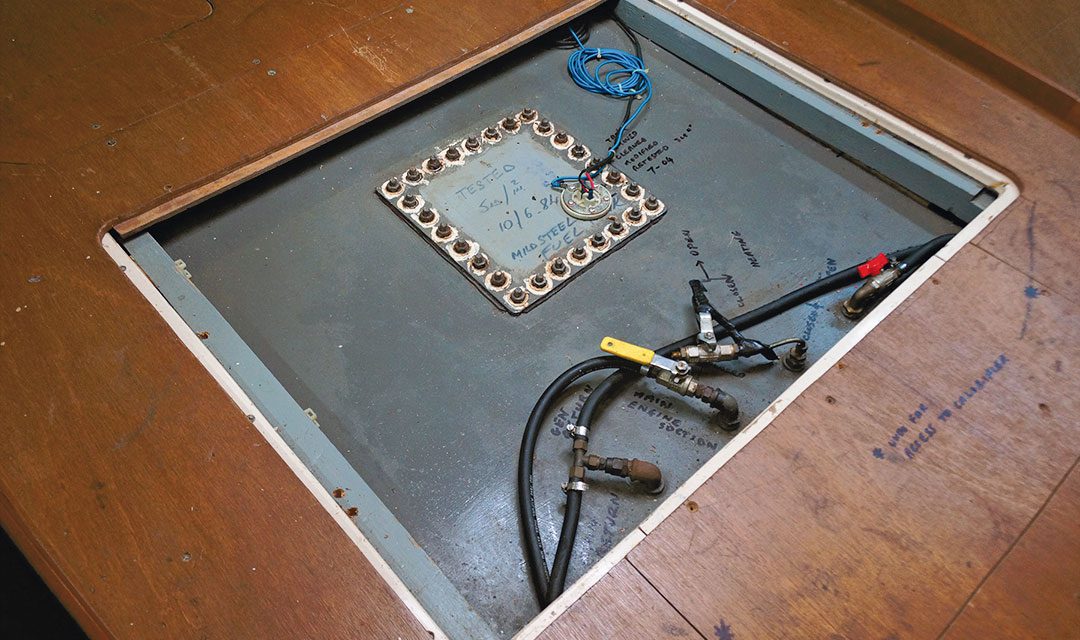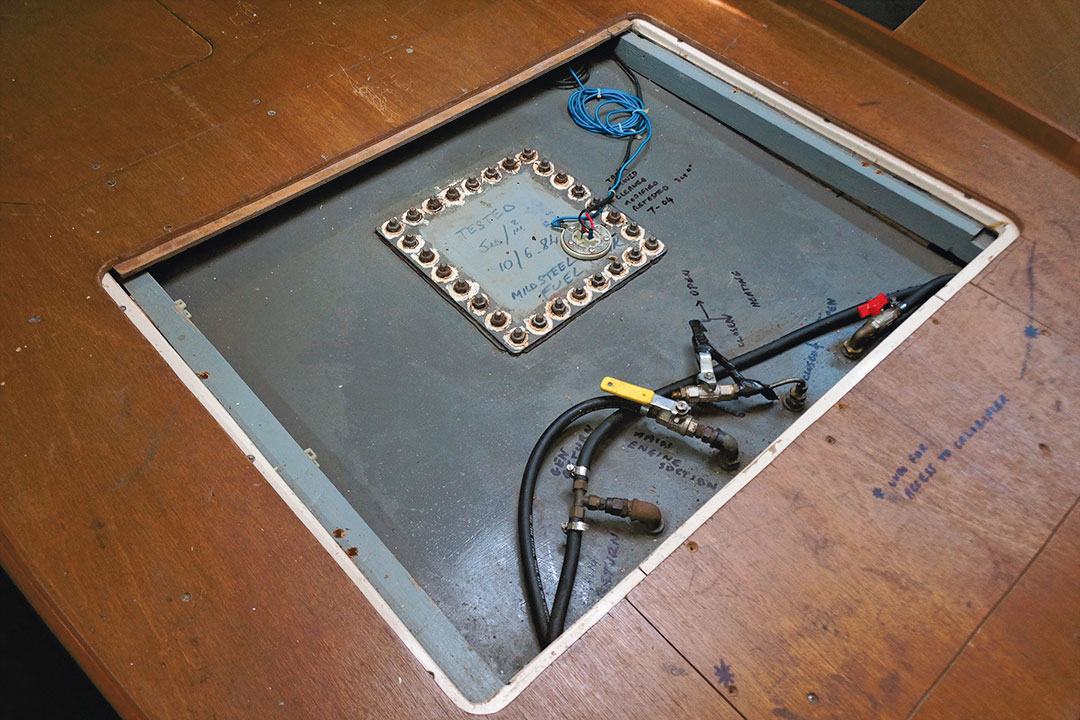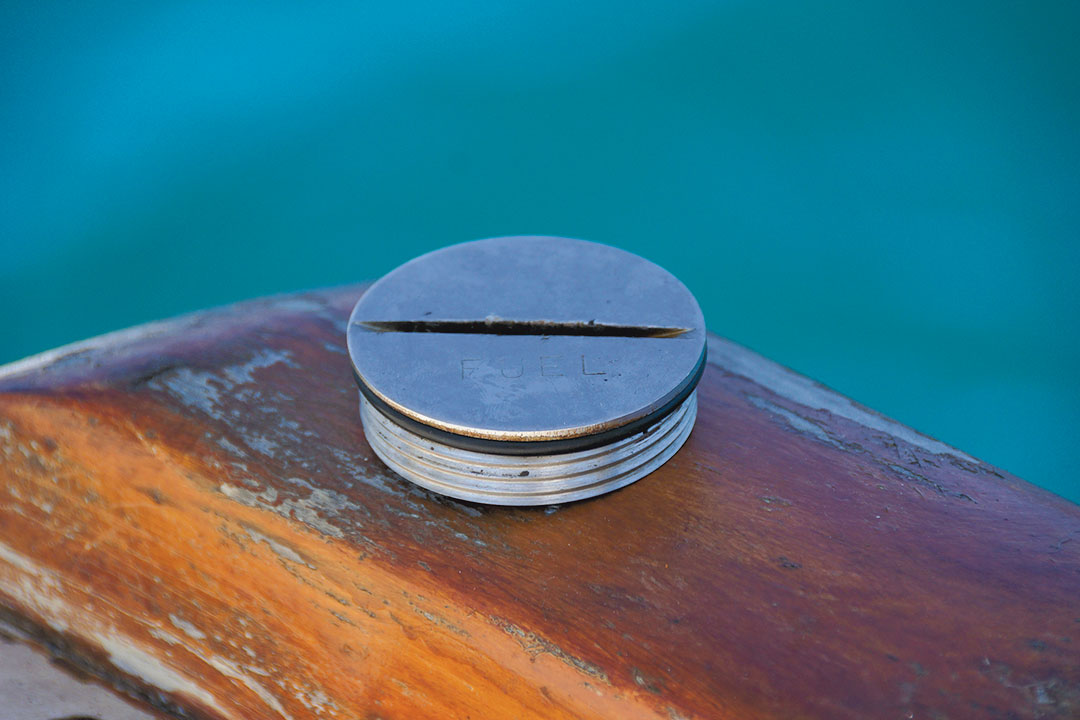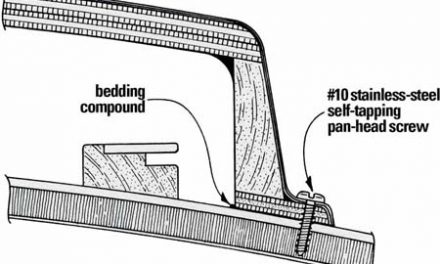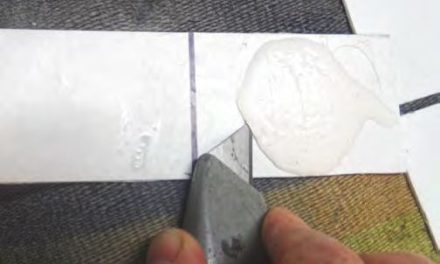Cleaning a fouled diesel tank started with polishing some dirty fuel on the fly.
Aboard our 1984 Moody 47, diesel is the elixir of electricity, and electricity is what drives our lives aboard. When our diesel-powered generator is humming, so is the inverter, the TV, the laptops, and all lights and other electronics. My wife, Erin, even likes to run an electric scented-oil burner to mask the odors our three boys and their stuff make aboard. So, on the fateful evening our generator unexpectedly powered itself down to a low idle, sputtered, and died, four faces turned to stare at me. I jumped to action.
I had been dealing with issues similar to this, and I was sure the generator’s temperature sensor was acting up again. When the connections to that sensor fail, the generator thinks it’s overheating and shuts down. But after checking the wiring connections to the problematic sensor, I couldn’t find a fault. I wondered if this was a fuel problem.
There was plenty of diesel in the tank, so my next step was to confirm that diesel was getting to the generator. Fischer Panda generators use an electric lift pump to draw diesel from the main tank, through a water separator/filter, and to a mechanical high-pressure fuel pump that supplies the injectors. I disconnected the fuel hose where it feeds the high-pressure pump, stuck the end of that hose into an empty Coke bottle, and activated the lift pump using an override switch. The lift pump made its normal pumping sounds, but to my surprise, no fuel ran into the Coke bottle.
I focused my attention on the water separator/filter. The water separator has internal ports that can become blocked. I pulled the unit apart, cleaned and inspected it, changed the filter, reassembled everything, and then tried again to draw fuel into the empty Coke bottle. Nothing. Clogged fuel hoses? I disconnected sections of hose and successfully blew through each. No problems there. I now eyed the fuel tank.
Moody located the large steel fuel tank under the aft cabin berth. After disconnecting the flexible fuel hose, I unscrewed the fitting at the top of the tank that supports the rigid stainless steel fuel pickup tube that supplies the generator. After I pulled the tube out, I blew hard into one end and a large glob of sludge flew across the cabin. I had found the problem.
In my previous life as an aircraft technician in the military, I spent many long, uncomfortable hours inside the wings of the P-3 Orion reconnaissance aircraft, that is to say, inside the fuel tanks, repairing fuel leaks. These tanks were scrupulously maintained and always as clean as the day they were made. I knew now that the fuel tank aboard our boat wasn’t as squeaky clean, and that this was a problem. I also knew I couldn’t crawl around inside this tank to clean it. After seeing a quote to polish my fuel from the local fuel provider, it was clear this was going to be another DIY job.
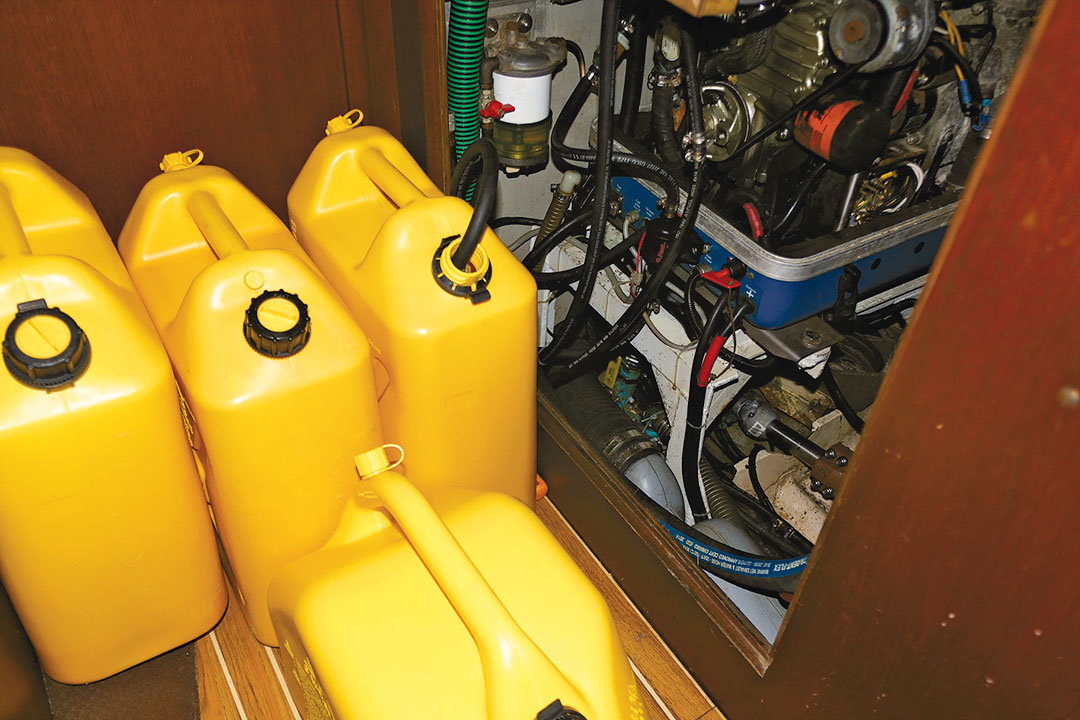
The first step was to remove and clean the diesel in the tank. I decided to use the generator’s lift pump to suck the fuel out of the tank, through the water separator/filter, and into clean jerry cans. But the pump was connected to the generator’s dedicated 12-volt starter battery, and this battery isn’t sized to run this pump for a long period without the generator running. To drain this tank, I disconnected the lift pump from the starter battery and connected it to the main house battery bank.
With the fuel removed from the tank, filtered, and stowed temporarily in jerry cans, it was time to open the tank up and scrub it clean. I gathered my tools and removed the 28 bolts that secured the access panel. As a matter of habit gained in the military, I kept my work area very tidy, ensured that my tools were kept track of and that nothing unknown could fall into the tank opening.
While fuel tanks are nasty places, diesel fortunately has a very low flash point, meaning it will not easily combust at atmospheric pressure (gasoline is an absolutely different story). Nevertheless, before opening the tank, I opened every hatch and portlight on the boat and ran a fan to increase airflow. And I donned nitrile gloves before I got started to avoid getting diesel fuel on my skin—never do this bare-handed!
With the tank drained and opened, I peered carefully inside to see what I was dealing with. (Expensive, confined-space entry equipment isn’t typical aboard any sailboat, so those with an access port large enough to allow a head inside must be careful to avoid breathing the air inside the tank.) It was obvious I had a sludge problem; the lower surfaces had clumps forming in various places, and other random debris had accumulated in the low spots, just waiting to block fuel lines, ports, or filters.
The good news is that clean, lint-free rags and enough access for an arm to reach inside are all that were required to wipe out the tank and remove debris. I wiped thoroughly, careful to reach every part of the tank; this wasn’t a job I wanted to have to repeat anytime soon.
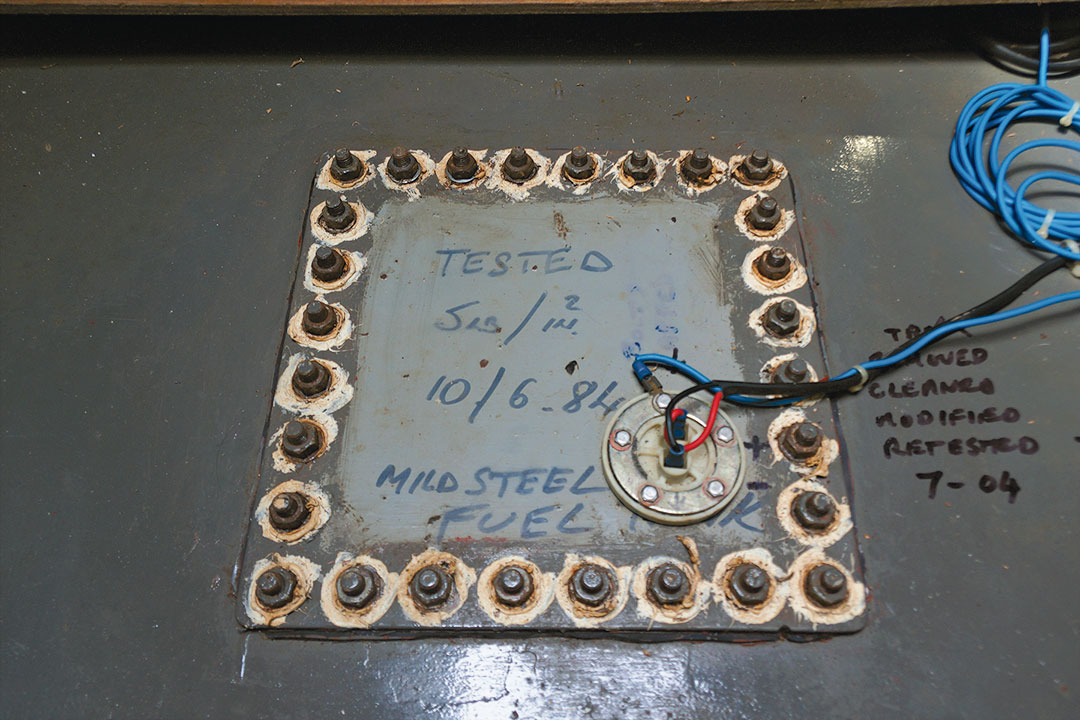
With the tank now clean, I replaced the access hatch, tightening the access-panel bolts in a random sequence to ensure a proper seal, much like tightening the bolts that secure an internal combustion engine’s cylinder head to the block. Finally, I refilled the tank to the brim and checked to confirm that the access panel wasn’t leaking. (And, it’s good practice to keep your fuel tank filled because it limits the area of interior walls on which condensation can form. This is important because water is where bacteria, which creates sludge in fuel, breeds.)
With this problem solved, I felt a renewed sense of confidence in my boat. My fuel tank was clean, and I was determined to keep it that way (in the sidebars attached to this article, I outline all the steps I take to keep my fuel and its tank clean). It’s good practice, but more than that, it’s because I know the generator likes clean fuel, and I know that the generator turns that clean fuel into electricity, and I know my family loves electricity.
Keep It Clean
Following are four common causes of water contamination of fuel.
- A broken O-ring on a deck fill cap: A poorly sealing deck fill cap can allow a lot of water to get where you don’t want it. Some decks with a high cap rail (mine included) incorporate deck fill caps that are submerged when the boat is heeling, making a good seal even more critical. Carefully check this O-ring every time you refuel and replace it periodically.
- Fuel tank vent installed in the wrong position: Take a look at your fuel tank vent fitting. Is it oriented in a way that might make it prone to water entry? Could a following sea force water into the vent line and to the tank? Are hoses run correctly to allow venting, but to prevent water flow? Maybe consider relocating a vent that’s caused problems in the past.
- Condensation formed in a partially empty tank: A tank left partially empty in a tropical climate allows condensation to form on interior tank walls and then settle and accumulate at the bottom of the tank. Keep the tank topped off.
- Contaminated fuel from the source: Fuel delivery trucks and marina fuel docks are a part of your fuel system! Any water or contamination that gets into the fuel during transportation, storage, or delivery has the potential to wind up in your tank. To decrease the likelihood of receiving contaminated fuel, go to busy, high-turnover fuel stations when possible. These stations have a shorter span between delivery and sale, so tanks are likely to be cleaner. The quality and freshness of fuel found at a land-based station can sometimes be much higher than at a sleepy fuel dock—of course, that may mean getting the fuel to your boat via jerry can.
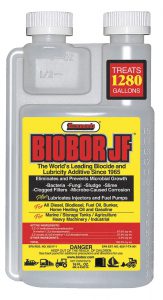
Critter Control
When it comes to long-term management of diesel fuel, polishing your fuel and cleaning your tank can get you back to square one, but the goal should be staying close to square one. All of the tips I give for preventing water and contaminants from getting into the tank are important, but adding a biocide to the fuel is often a good tactic for keeping contaminants at bay.
A biocide is an effective way to kill growth inside your tank. A biocide that’s coupled with a water-separating additive will help to demulsify any water present from the fuel, making it easier for a fuel/water separator to remove water. ValvTect Bioguard and Biobor JF are two of many products that are effective in killing off bacteria and fungi that live in the water in the fuel and feed on the fuel itself.
Be warned that in the case of heavily contaminated tanks, biocides have the ability to kill off enough organisms that they become suspended in the fuel and can clog filters. For this reason, when using a biocide, it’s important to closely monitor the fuel lines, and more filter changes will help mitigate the problem—that is, unless the fuel pick-up line gets clogged.
A Little Polish
David Carey relates the sticker shock he experienced when a professional quoted a price to polish his boat’s fuel. For cruising sailors who might need to obtain fuel in places where the quality or cleanliness of the diesel can’t be assured, a dedicated on-board fuel polishing system is an alternative.
There are two types. The first is independent of the engine fuel delivery system. The second is integral to that system.
In the first method, all the plumbing is run independently. Separate pick-ups and returns are typically installed in a tank’s access panel. This often means removing the panel and asking a welder to weld bosses into it to support the necessary fittings. From the fittings, hoses run to a dedicated polishing pump and filter. There are several on the market; Reverso is a well-known option with several sizes to accommodate fuel capacity. The benefit of this type of system is that there are fewer connections that can cause leaks, and it can operate whether the engine or generator is running or not.
The second method ties the fuel polishing system’s pump and filters into the fuel delivery system through a series of connections and valves. The benefit of this method is that fuel tanks don’t need any modifications. The downside is that it requires multiple valves and connections (thus more complexity) than in an independent system. This approach doesn’t allow for the fuel to be polished while the engine or generator is running.
A dedicated fuel polishing system isn’t inexpensive, but can be effective in keeping fuel clean, thus preventing unexpected and inopportune engine shut-down due to contaminated fuel.


